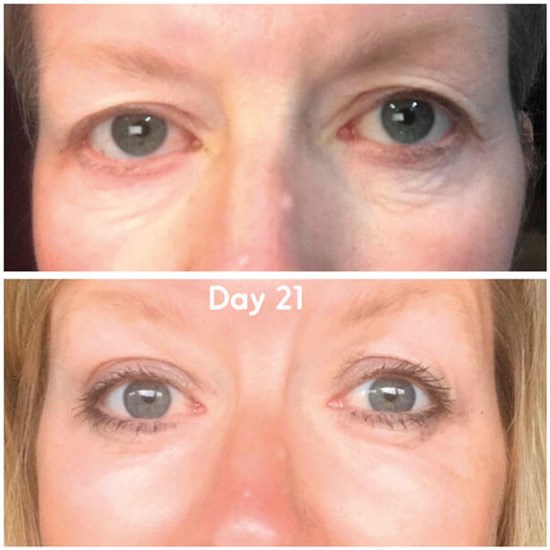What is plasma?
Plasma is produced when an electrical energy is charged or overheated, leading to a dissociation of molecular bonds and the production of a plasma arc. The arc delivers energy to the cell membrane, causing sublimation, changing a solid to a gas and bypassing the liquid phase which would potentially cause the skin to burn. The plasma arc hits the skin, creating an immediate contraction of the tissue and the stimulation of fibroblasts, initiating tissue regeneration and tightening of the skin.
Patient selection and consultation
Plasma is an ideal treatment for patients with skin laxity around the eye area, (although many other areas can also be treated). I personally use the Plasma Elite pen for this treatment. It is important to select patients based on the degree of laxity and to manage expectations. It is not possible to guarantee the shrinkage of the skin so therefore practitioners should be realistic regarding the outcome.
An in-depth medical history is taken before treatment including questions about immunosuppression or diabetes. Prolonged healing time is experienced in these patients, which can result in longer periods of isolation and time away from socialising or attending work. Assessment of the laxity of the skin using the ‘snap test’, consideration of the Fitzpatrick scale and any other skin conditions should be evaluated on consultation.
Although plasma does not affect the melanocytes, I would recommend avoiding treating patients with Fitzpatrick >3 unless a patch test is carried out to reduce risks of hyperpigmentation.
Keloid and hypertrophic scarring can be considered a contraindication; however, scarring such as stretch marks or pock marks can be treated.

Patient photograph before and 21 days after non-surgical blepharoplasty using Plasma Elite.
Preparation
The patient must not have had any other skin treatments (such as laser, skin needling or peels) in the three weeks prior to treatment, as this skin trauma could potentially interfere with natural skin healing.
A patch test is normally carried out on consultation a few days before the treatment is arranged. Cleaning the skin with a good skin disinfectant is imperative as I recommend dry healing for 7-10 days afterwards to allow for the carbon crusts to fall off naturally. This allows for less pitting of the skin if the crusts are knocked off or picked.
Treatment
The carbon plume produced during the treatment is considered a biohazard therefore a plume extractor (recently launched by Plasma Elite) is essential in protecting both patient and practitioner.
After thoroughly cleaning the skin with a chlorhexadine solution and allowing to dry, a thin layer of local anaesthesia is applied. I find Emla to be excellent in helping with the comfort of the procedure leaving it no longer than 15-20 minutes which can result in the anaesthesia wearing off and the patient becoming uncomfortable. Skin is cleansed again, and the plasma treatment is started.
Care should be taken on the thin, fragile skin of the eyelid; intervals of 1-2mm between each dot respects the delicate structure of the orbital area.
I personally like to do a diced pattern on the upper eyelids as I feel it gives a tighter skin contraction on looser skin and good healing. A spray like pattern may also be used, which will give a subtle contraction and lift.
The plasma should not be held over the skin too long as this would result in a deeper penetration of the energy and can result in prolonged pitting of the skin after the carbon crusts have flaked off.
Aftercare
The skin is cleaned of any carbon debris and I advise patients to dry heal for seven days. I also advise my patients that bilateral periorbital swelling is normal, can affect the whole eye, not just the area treated, and can last for a few days. Anti-inflammatory medication can be taken alongside antihistamines.
No makeup or creams should be applied and sunglasses with protection from UVA must be worn outside. When cleansing the newly treated area, lint free gauze with lukewarm water is advised and to pat dry immediately, no picking of the crusts as this can lead to scarring.
I recommend applying an SPF cream after the carbon crusts have flaked off, daily for up to three months post treatment. I personally recommend retinol cream in the evening after the crusts have fallen off; this acts as an antioxidant and can help encourage healthy new skin cells to develop.
Follow-up treatment can be offered at approximately six weeks to three months for optimal results.
Declaration of competing interests: None declared.
COMMENTS ARE WELCOME





